Should the lock ring be removed before the bonding bushing is threaded on?
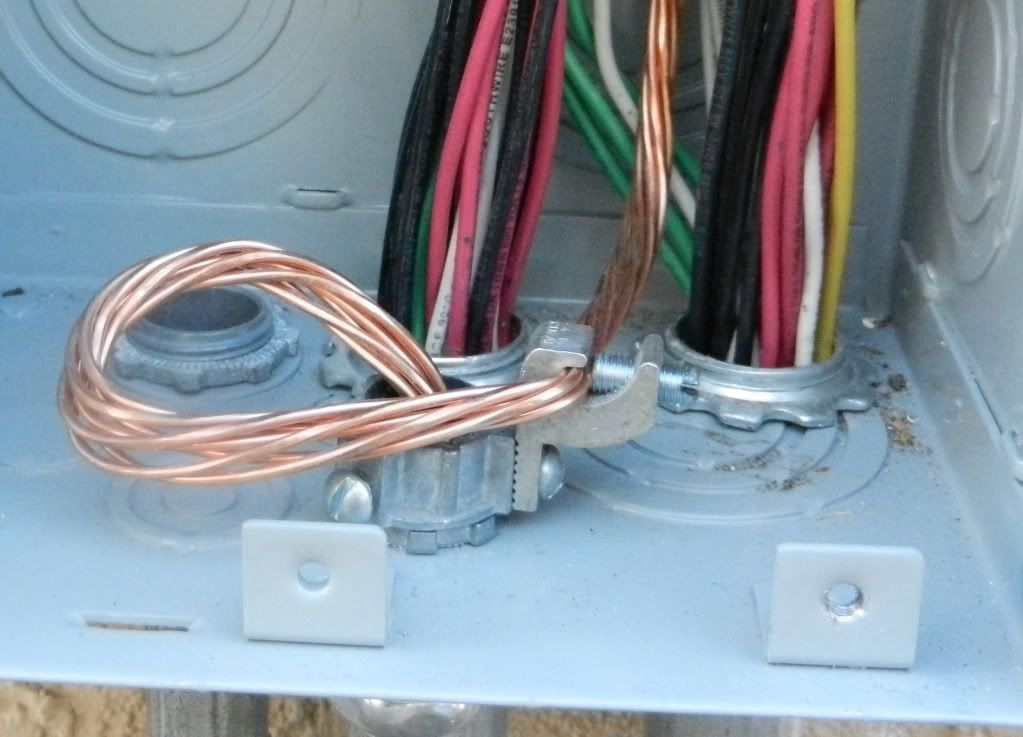

Last edited by a moderator:
Your premier resource for building code knowledge.
This forum remains free to the public thanks to the generous support of our Sawhorse Members and Corporate Sponsors. Their contributions help keep this community thriving and accessible.
Want enhanced access to expert discussions and exclusive features? Learn more about the benefits here.
Ready to upgrade? Log in and upgrade now.

This is a residential service 120/240. I'm pretty sure that double lock rings don't come into play unless it is over 600 volts. But don't take my word for it, ask an electrician.Gregg Harris said:I do believe it requires a lock ring on both sides.
That is a grounding electrode conductor that has armor sheath protecting it. Every end of the armor shall be bonded to the GEC. Before this panel was done, there were four more bonding bushings, one for each conduit.jar546 said:Why is there a bonding bushing on that?
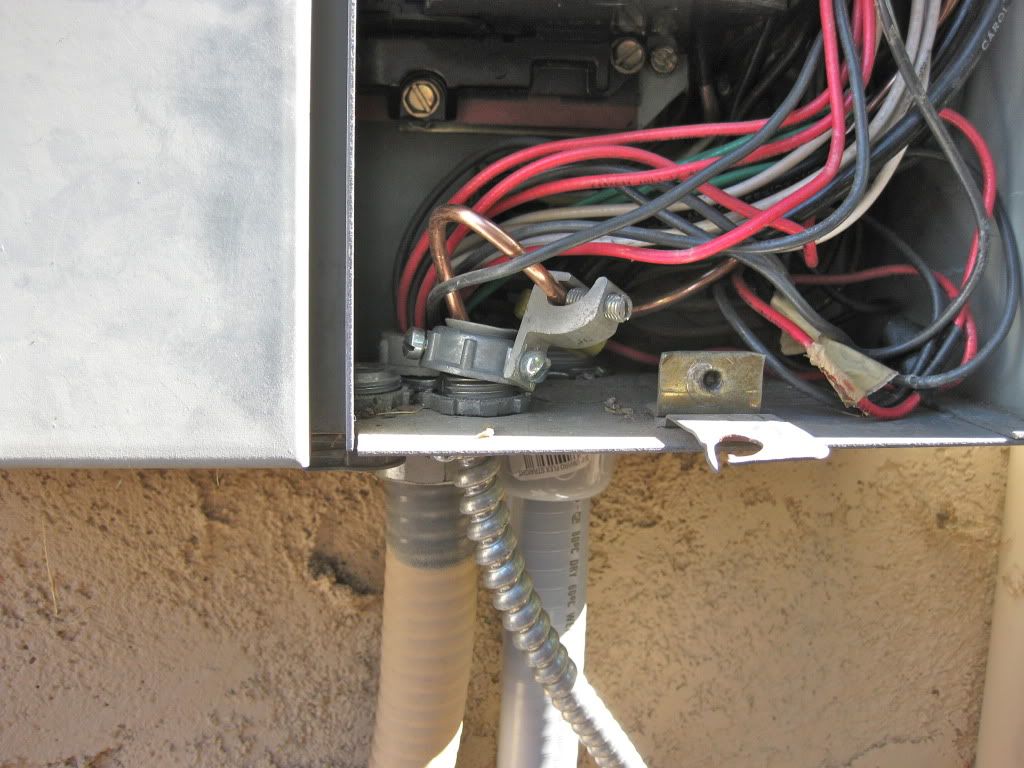
Just to be clear- this is a weather proof enclosure so entry above the busbar would not be compliant with this type cable since the connectors would not be able water tight.codeworks said:you can drill a hole in the top, sides or bottom, as long as you've got proper wire bending space, room for fitting and locknots, and grounding bushings if req'd
3) Again your regional use of 3/8 FMC for this install seems to be in violation of 348.20.300.4(G) Insulated Fittings. Where raceways contain 4 AWG or larger insulated circuit conductors and these conductors enter a cabinet, box, enclosure, or raceway, the conductors shall be protected by a substantial fitting providing a smoothly rounded insulating surface, unless the conductors are separated from the fitting or raceway by substantial insulating material that is securely fastened in place.Exception: Where threaded hubs or bosses that are an integral part of a cabinet, box, enclosure, or raceway provide a smoothly rounded or flared entry for conductors.
Conduit bushings constructed wholly of insulating material shall not be used to secure a fitting or raceway. The insulating fitting or insulating material shall have a temperature rating not less than the insulation temperature rating of the installed conductors.
348.20 Size.(A) Minimum. FMC less than metric designator 16 (trade size ½) shall not be used unless permitted in 348.20(A)(1) through (A)(5) for metric designator 12 (trade size ).
(1) For enclosing the leads of motors as permitted in 430.245(B)
(2) In lengths not in excess of 1.8 m (6 ft) for any of the following uses:
a. For utilization equipment
b. As part of a listed assembly
c. For tap connections to luminaires as permitted in 410.117©
(3) For manufactured wiring systems as permitted in 604.6(A)
(4) In hoistways as permitted in 620.21(A)(1)
(5) As part of a listed assembly to connect wired luminaire sections as permitted in 410.137©
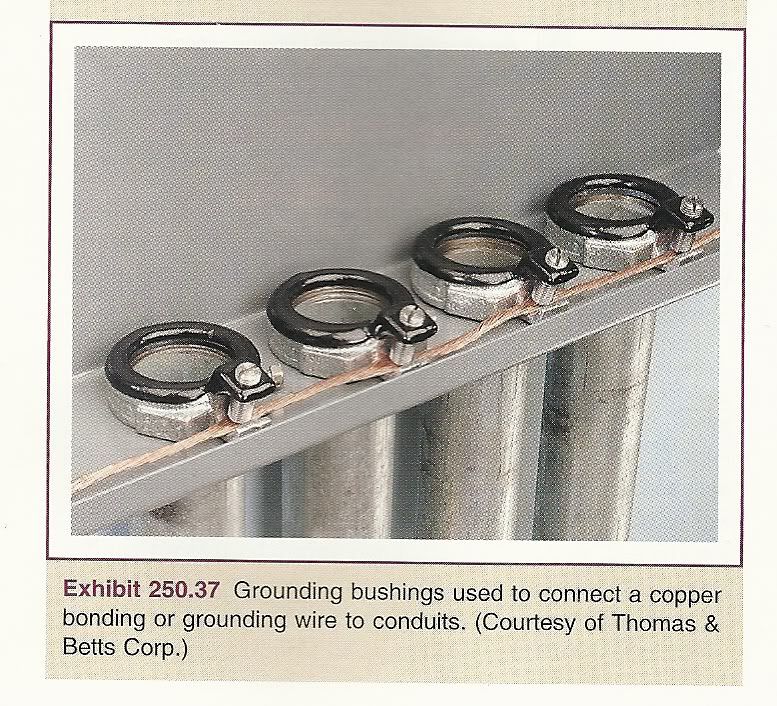
But using a locknut is also not a violation.chris kennedy said:And in closing, the following pic is from the 2008 NECHB and is courtesy of a manufacturer of bonding bushings. No lock nut required.
Yes sir, I certainly agree with you.Dennis said:But using a locknut is also not a violation.
Buy your IT guy lunch.codeworks said:i don't get pictures, filters
Are we looking for the UL. and CSA listings? UL file # E3060 and CSA file # LR2884.chris kennedy said:I can't find the listing, yet here is some food for thought.1) I researched 3 manufactures of bonding bushings all 3 state for use on RMC IMC. So again IMO the use of one on a MC fitting violates 110.3(B). Here is a link to one.
2) There is a sentence in 300.4 that would lead me to believe a metallic bonding bushing is not required to secure a raceway to an enclosure.
3) Again your regional use of 3/8 FMC for this install seems to be in violation of 348.20.
And in closing, the following pic is from the 2008 NECHB and is courtesy of a manufacturer of bonding bushings. No lock nut required.

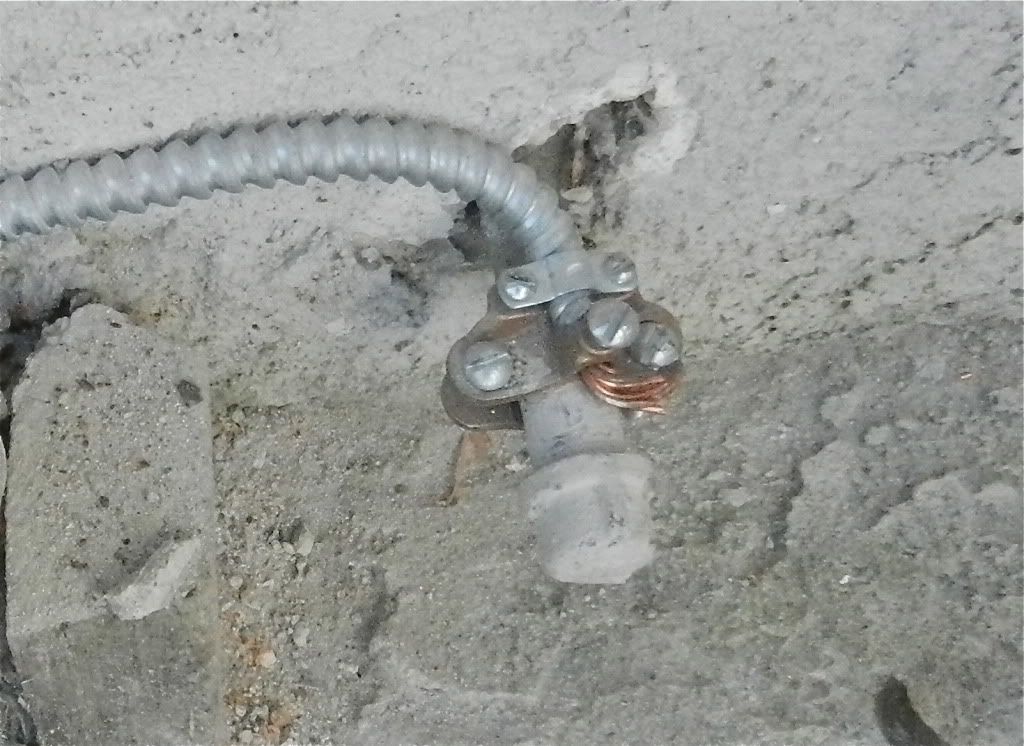
Galvin Electrical "The clamps are used to connect armored cable to water pipe for grounding."ICE said:Thanks gentlemen,I appreciate the time you have spent on this.
Our use of FMC to protect a GEC is becoming more suspect by the day. The use is widespread here in Ca.
The clamp in the picture has a listing and I wonder if this clamp was developed specifically for this application because I don't see any other use for it. I don't know what the listing says and as wrong as I've been in the past I won't be taking any bets.
Looking at the conduit fittings, I don't see enough threaded material to screw on a bushing unless the lock ring is removed.

Thank you-- I have never bonded with armored cable and it does not look like an armored cable connection. It looks like a nm cable type of clamp and generally they are not compliant for flex. I see that they are compliant.Gregg Harris said:Galvin Electrical "The clamps are used to connect armored cable to water pipe for grounding."UL and CSA listed
Typical east coast install done yesterday.ICE said:What do you west coast electricians do? (I don't think they do it this way back east.)
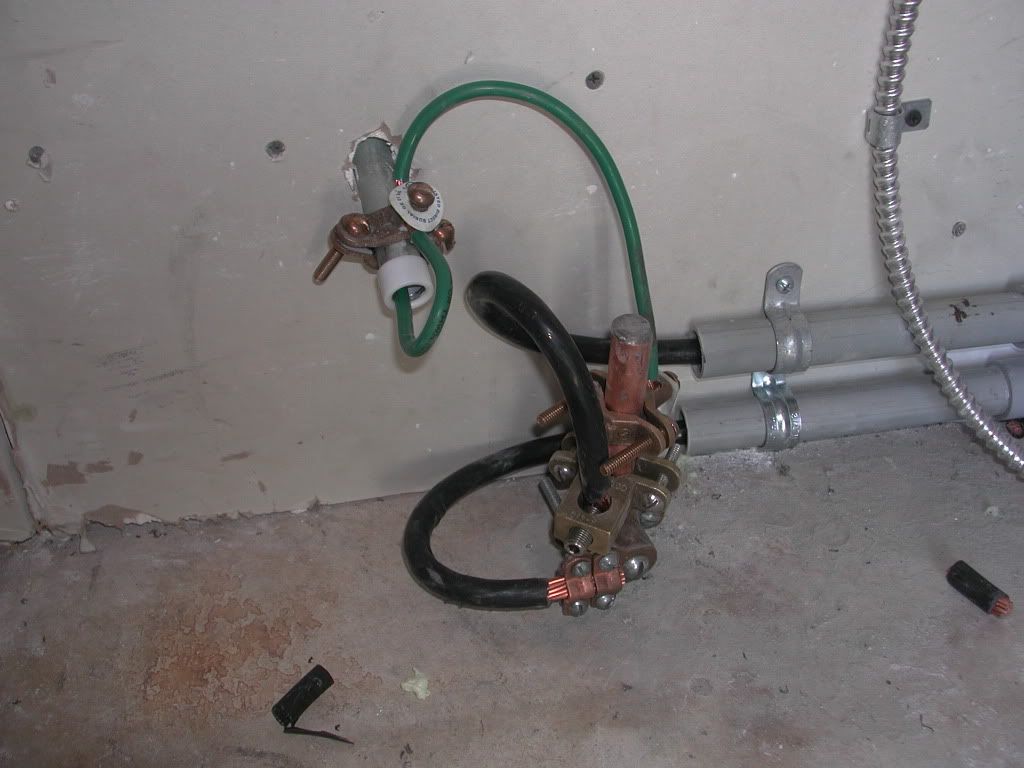
Maybe in Florida but not here. I have never seen a rod and gec installed like that. I assume you guys have to use copper because of the salt down there? I know I did when I did a house at the coast here in NC. PVC wasn't allowed outdoors there because of the sun. I installed a temp. pole with a pvc riser and I had to change it to galvinized.chris kennedy said:Typical east coast install done yesterday.
Is there a reason that you use insulated as opposed to a bare conductor? Why are there two GEC? Is that schedule 80 conduit? What is the green bonding jumper for? And I see an armored cable, what's that for?chris kennedy said:Typical east coast install done yesterday.
